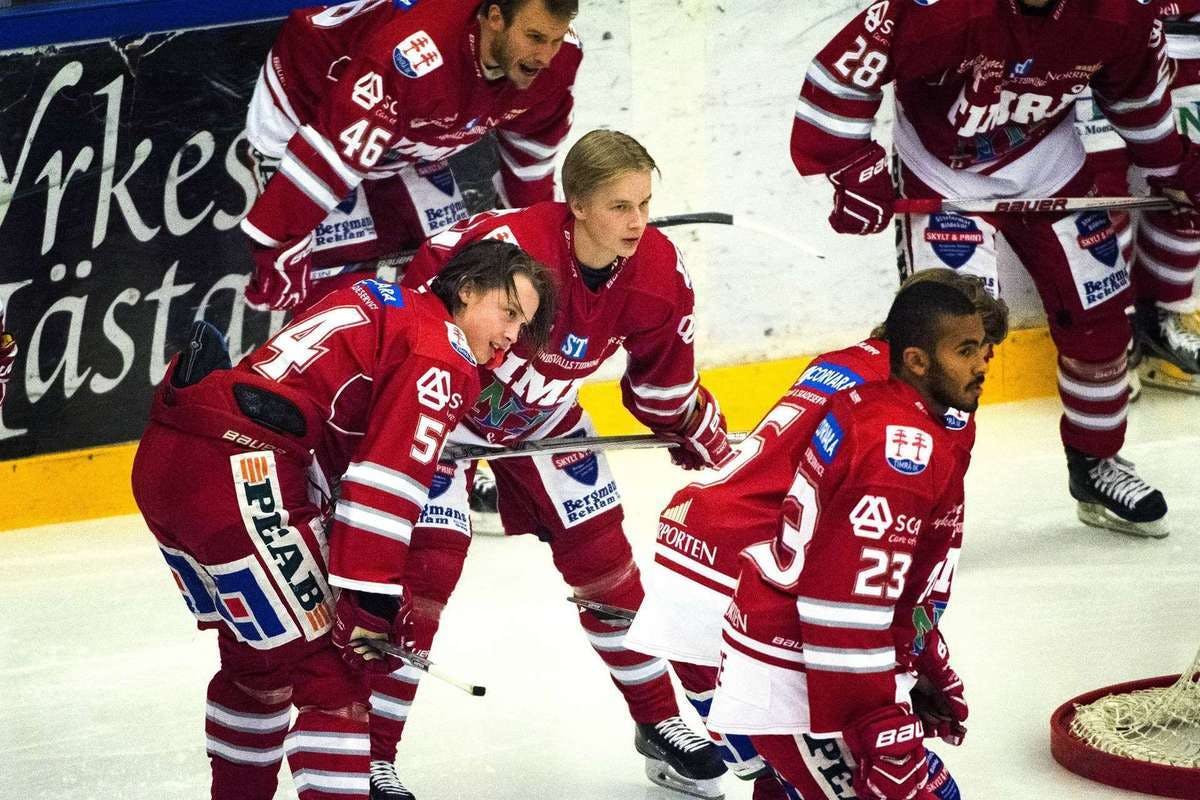Benning: “Dahlen played a part” in Drafting Elias Pettersson

By J.D. Burke
6 years agoGetting a better whole than the sum of Swedish parts is what made the Canucks one of the most successful franchises of the post-salary cap era. Their selection of Elias Pettersson fifth overall is the final step towards making sure history repeats itself.
The Canucks took the first step when they acquired Pettersson’s teammate, Jonathan Dahlen, from the Ottawa Senators at the trade deadline in what proved to be one of Canucks general manager Jim Benning’s craftiest moves since coming to Vancouver. Both Pettersson and Dahlen were starring members of Timra’s first line in the Allsvenskan, a second-tier professional league in Sweden.
And while Pettersson’s innate chemistry with Dahlen didn’t drive Vancouver towards the latter in March, Benning admitted the role it played in deciding to draft the former on Friday.
“Well, I think [their chemistry] played a part in [drafting Pettersson].” Benning admitted. “They have good chemistry together; they both had really good seasons; they can read off each other. Pettersson could find where Dahlen was. Dahlen is good in the corners and in front of the net; Pettersson had the vision to know where he was at and to find him and set him up for scoring chances.”
Benning’s remarks pass the sniff test. When Pettersson and Dahlen shared the ice, Timra controlled roughly 65% of the goals scored at even strength. The one caveat here is that Pettersson, who the Canucks envision as their playmaking centre of the future, played primarily on the left wing, leaving the pivot’s duties to the 33-year-old veteran Sebastian Lauritzen. Benning doesn’t sound concerned about where Pettersson’s future lies, though.
“Petterson’s going to be a playmaking centre for us.” Benning told Canucks Army. “Pettersson is the type of player who makes the players he plays with better”.
It’s not just on-ice chemistry that Pettersson shares with Dahlen, though. When I asked Pettersson if he was excited to join Dahlen in the Canucks organization, he cut me off instantly with a sarcastic “no, not at all” laughing and smiling all the way through. He then added that I could tell Dahlen he said that, before revealing to me his genuine feelings about the situation.
“No, it’s great. [Dahlen] joined the team from HV71, and we had good chemistry together and played [well] together.” Pettersson told Canucks Army. To be in the same organization in the NHL as well is very good, he’s one of my best friends.”
If the Canucks have their way, that chemistry is going to follow them across the Atlantic and right into their first line of the future. Benning’s thinking big picture where these two are concerned.
“We’re hoping [Dahlen and Pettersson] can be part of one or two really good lines for us.” Benning said. “We’ll have to see where that goes with their development, but we feel really strongly that they could be a real good line for us”.
The odds are always stacked in the house’s favour when it comes to prospects. If the Canucks can harness one first line forward out of the two Swedes, that’s a win. I’m not ready to rule out the possibility that they get to that first line level together at some point either.
When we last checked in with Dahlen, his pGPS suggests he has as good as a 31.2% chance of developing into a full-time NHL’er. Pettersson’s draft campaign was so productive that it’s without comparison — he doesn’t even register in that same draft metric. When Pettersson’s scoring rates pass through SEAL (Situation Era Age League) adjustments, he’s the most productive player in his draft class on a point per game basis.
The two Swedes carrying a Canucks’ first line for the next few years might not be the most realistic outcome to expect, but you’re not without reason for entertaining the notion. It’s not like there isn’t a precedent.
Recent articles from J.D. Burke





